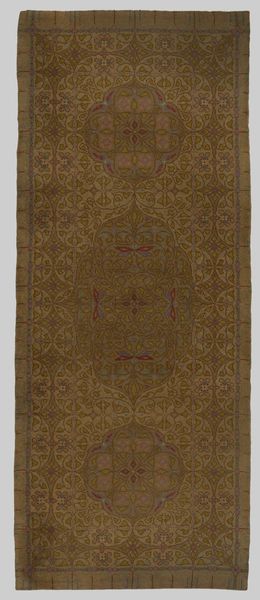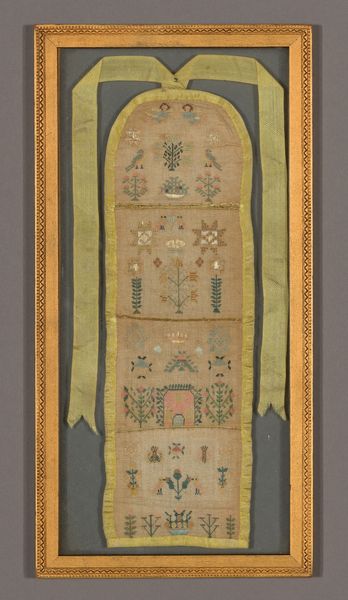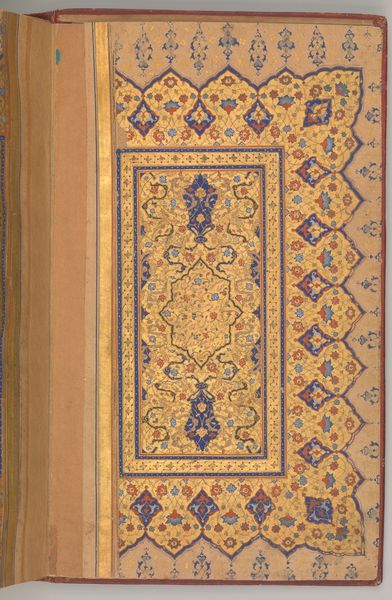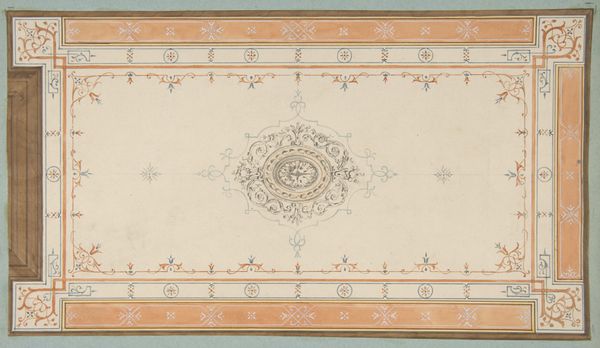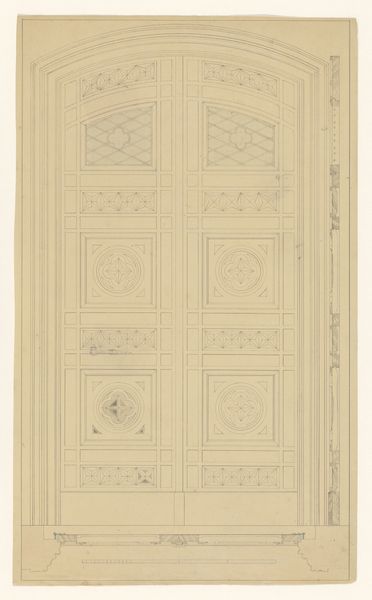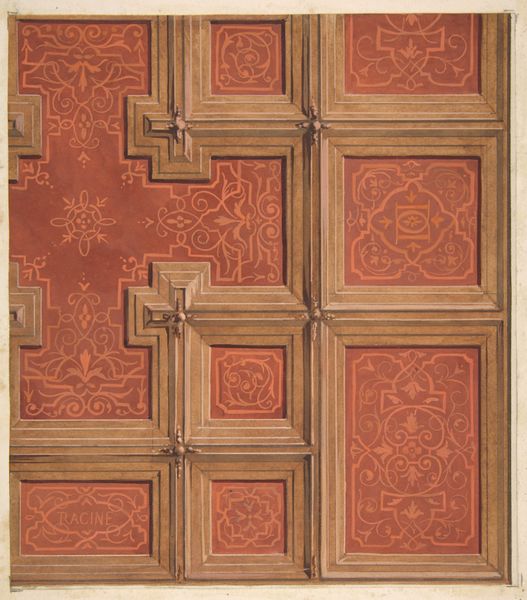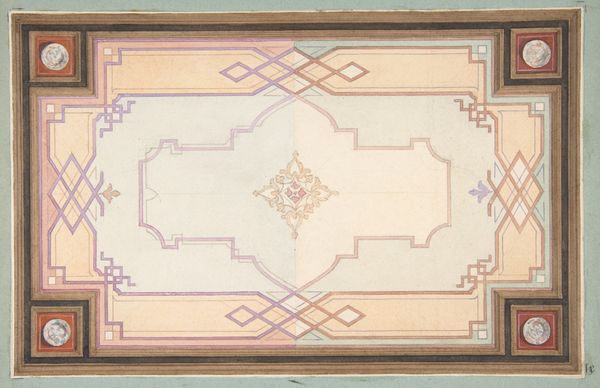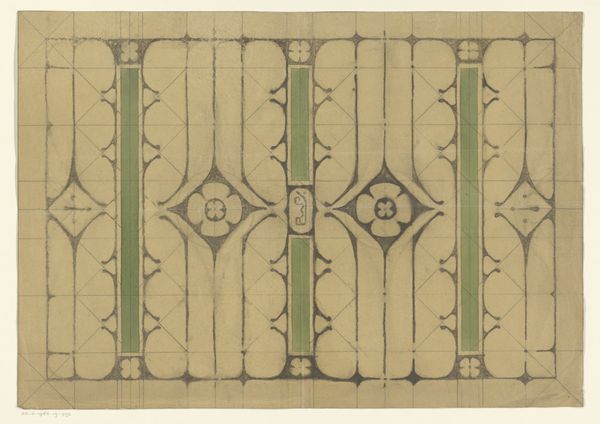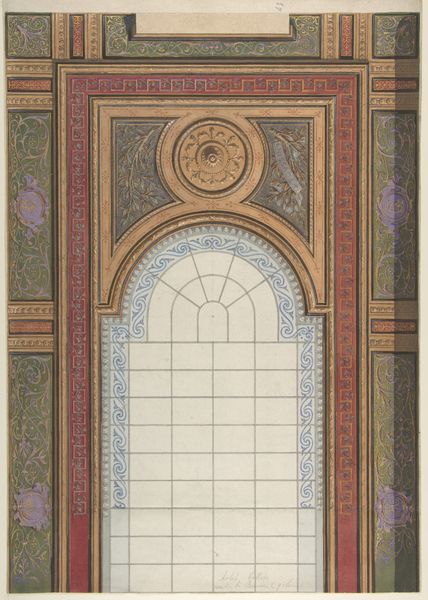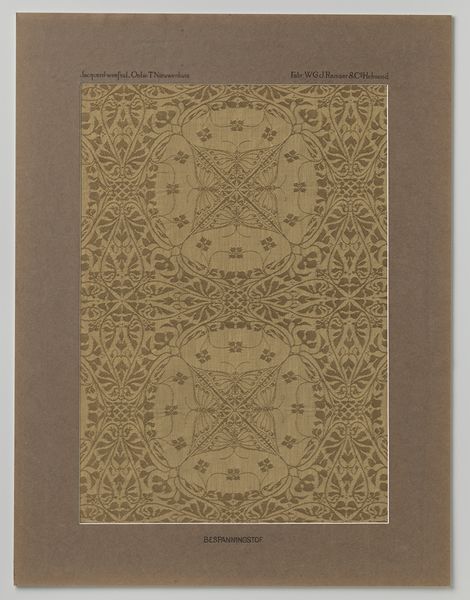
painting, mural
#
painting
#
pattern
#
repetitive shape and pattern
#
geometric
#
decorative-art
#
mural
Dimensions: 2009.226.19a: 29 1/2 in. × 12 ft. 9 1/4 in. (74.9 × 389.3 cm) 2009.226.19b: 29 1/2 in. × 18 ft. 5 1/4 in. (74.9 × 562 cm) 2009.226.19c: 29 1/8 in. × 12 ft. 8 in. (74 × 386.1 cm) 2009.226.19d: 29 1/2 in. × 18 ft. 5 in. (74.9 × 561.3 cm) 2009.226.19e: 9 ft. 1 3/8 in. × 11 ft. 6 5/8 in. (277.8 × 352.1 cm) 2009.226.19f: 96 7/8 in. × 11 ft. 6 1/8 in. (246.1 × 350.8 cm)
Copyright: Public Domain
Here we see a Frieze and ceiling made by Virgilio Tojetti, now held at the Metropolitan Museum of Art. The design is dominated by floral motifs, which, at first glance, evoke a sense of classical elegance and ornamentation. However, these floral patterns are not merely decorative, they carry a deeper cultural resonance. The wreath or garland, seen around the central medallion and along the borders, has ancient roots. From ancient Greece, where wreaths symbolized victory and honor, to Roman times, where they adorned emperors and gods, these circular arrangements embody power and reverence. It is fascinating to see this motif evolve through the Renaissance and into the 19th century, losing its overt associations with divinity, yet still whispering of prestige and aesthetic refinement. Here, the emotional impact lies in the subtle way these symbols tap into our collective memory. We are reminded of past glories and perhaps unconsciously aspire to associate ourselves with the timeless ideals they represent. The symbolic journey of the floral wreath exemplifies how images persist, transform, and continue to engage us across centuries.
Comments
No comments
Be the first to comment and join the conversation on the ultimate creative platform.

